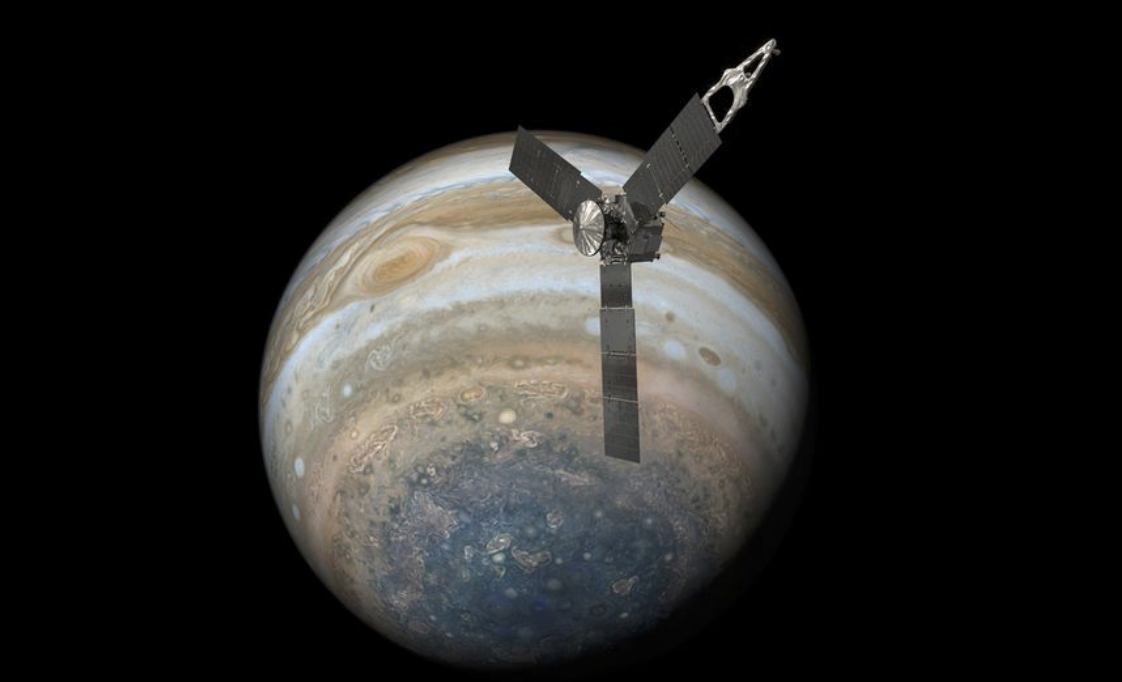The NASA “Juno” mission aims to learn more about Jupiter’s atmosphere, magnetosphere and chemical composition. This data could help scientists understand Jupiter’s past and the formation of the solar system. Periodically, it also initiates flybys of the Galilean moons to acquire images and data, whether that may be thermal images of Io or infrared images of Ganymede.
During its last flyby of Ganymede in 2021, Juno took images and spectrograms of the surface using its JIRAM spectrogramer- an instrument designed to study the chemistry of Jupiter’s atmosphere and its moons. It detected salt minerals and organic compounds on the icy surface. These findings hint at hydrothermal activity deep below the moon’s surface and could aid astronomers in better understanding Ganymede’s past and the composition of its underground sea. The team of the project was led by Ferderico Tosi, a Juno co – investigator. He worked with many institutions, such as Planetary Science Institute, Sapienza University of Rome and the University of Cornell just to name a few. Their findings have been published on October 30th in the journal Nature Astronomy and you can view it here at https://www.nature.com/natastron/
Ever since Voyager 1 and 2 visited the system in 1979, the Galilean moons (Io, Europa, Ganymede and Callisto) have been of great interest to scientists, with the main one being Ganymede, the largest of the Galeilians. Now this is for many reasons, such as its interior oceans that are thought to have more water than all of Earth’s oceans combined! Additionally, it is the only moon in the solar system that has a magnetic field.


